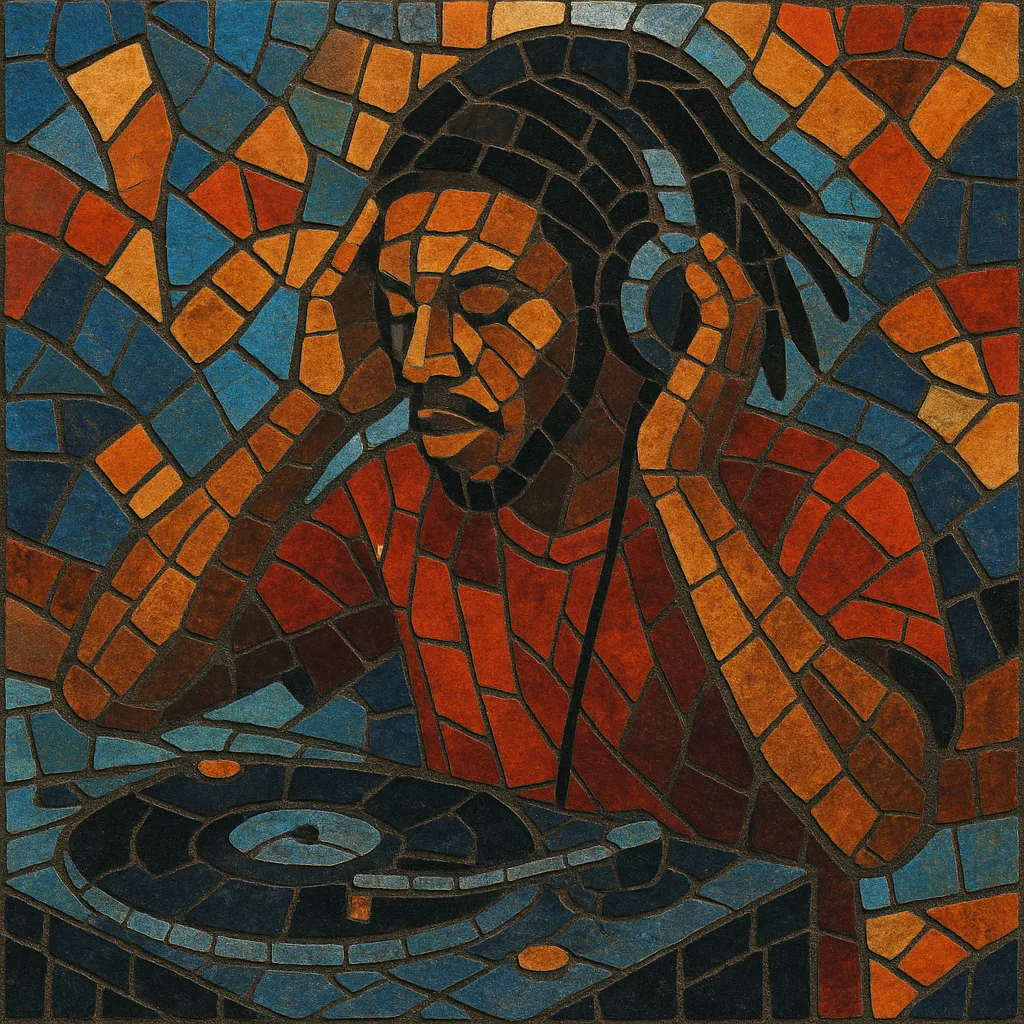Deejay is a Jamaican vocal style in which an MC "toasts"—rhythmically talking, chanting, or half-singing—over pre-existing instrumental tracks called riddims. Unlike the club turntablist sense of “DJ,” the Jamaican deejay is the voice on the mic, not the person selecting records.
Emerging from Kingston sound-system culture, deejay performance foregrounds cadence, patois wordplay, call‑and‑response, and crowd control. Its delivery ranges from nimble, percussive chat to singjay (melodic hybrids), often treated with dub-style echoes and dropouts. The form prefigured rap and has been central to reggae and dancehall, influencing MC traditions worldwide.
Jamaican deejay style grew out of Kingston sound systems, where selectors played popular ska, rocksteady, and then reggae records at street dances. Early mic men like Count Machuki and King Stitt hyped the crowd by talking over instrumental breaks. The practice expanded when engineers pressed “version” B‑sides—stripped-down instrumentals that left space for a vocal presence.
U-Roy’s hit runs (e.g., Wake the Town, 1970) made toasting a recording art, followed by I-Roy, Big Youth, Dennis Alcapone, Prince Jazzbo, and Dillinger. Dub innovators such as King Tubby and Lee “Scratch” Perry reshaped riddims with echo, reverb, and dropouts, giving deejays dramatic spaces to ride. Sound clashes—crew-versus-crew battles—codified competitive improvisation and crowd call‑and‑response.
The deejay became the leading voice of dancehall. Yellowman’s charisma and slackness themes epitomized the livewire 1980s sound system. In 1985, Wayne Smith’s Sleng Teng (a fully digital riddim) ignited the digital dancehall era, powering a wave of rapid-fire deejays like Super Cat and Shabba Ranks, whose crossover success took the style global.
Deejays such as Beenie Man, Bounty Killer, and later Vybz Kartel and others modernized flows and subject matter, while collaborations with hip hop and pop brought the form to mainstream audiences. The deejay approach to rhythmic speech and crowd command directly influenced hip hop MCing, UK sound system MC culture, jungle, grime, and, via dancehall, reggaeton.
Deejay remains a cornerstone of Jamaican music and a foundational MC tradition worldwide. Its emphasis on cadence, improvisation, and audience engagement shaped how modern rap, club MCing, and bass‑music vocal styles are performed.


